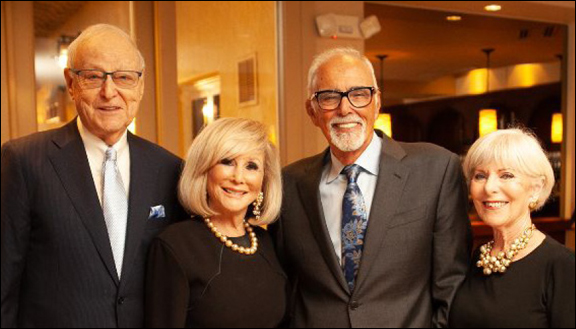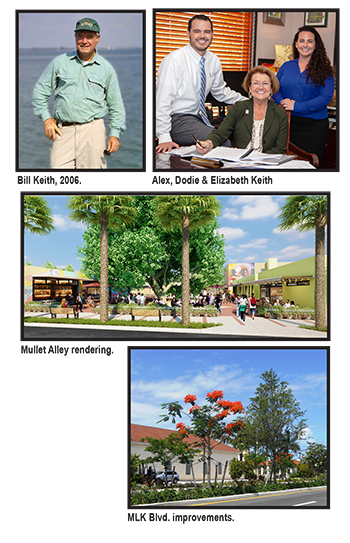By Karen Lustgarten
The Separation model
The
suburbs were for residential; the urban core for
commercial/industrial. Historically, urban planning was based on this
separation of functions model. It became a great model for commuter
traffic. As the suburbs grew, so did clogging main roads and
highways, and the rise of “rush hour” that increased in time by
number of vehicles on the road.
The
City of Boca Raton was no exception to the separate functions
planning model. For example, the once forward-looking Arvida Park of
Commerce built in the 1970s was based on an industrial and business
park model, no residential. One-third is office space and two-thirds
warehouses. The model was to provide minimal impact of traffic on
surrounding roadways.
“If
you’re warehousing a lot, you don’t have many employees,” said
Palm Beach County Commissioner Robert Weinroth.
The
original IBM/T-Rex campus (now Boca Raton Innovation Campus), also
fits the old model.
The
Planned Mobility model
With
the additional pressures on commuting and land development, Boca
Raton approved the model for urban planning called “planned
mobility” in 2010. It is based on the premise of rather than two
separate areas — one developed for a business district (industry
and retail) and the other for residential — they are merged into a
single area zoned for mixed-use.
“The
Boca Raton City Council made the decision several years ago to infill
the all-business Arvida Park of Commerce with residential units now
under construction,” said Commissioner Weinroth.
It
is being developed and re-branded by the Crocker Group as The Park at
Broken Sound, a 700-acre
planned mobility commercial/residential hub optimized to fulfill
the popular work/live/play concept.
“Planned
mobility has been in place for 10-15 years but hadn’t been
implemented until 2012 because of the financial downturn,” the
commissioner explained. “Housing values dropped dramatically so the
tax base went down and the influx of dollars dropped. It was a
painful time for the city. When the CRA originally planned out the
downtown, they envisioned it as mostly businesses. With the financial
downturn in the early 2000s, all that stopped.”
Downtown
Redevelopment
The
redevelopment of downtown Boca Raton was originally contemplated as a
business concentric urban core.
“But
government officials decided they needed to change that dynamic,”
said Weinroth. “Our downtown is a redevelopment area now. When the
CRA was created, they set up a matrix with so many square feet of
office and they had equivalents — hotels, condos, apartments —
based on impact on the area such as traffic, sewage, miles of lanes.”
By
the time the economy picked up, the move was toward residential and
mixed-use development.
“That’s
why now we are seeing Tower 155 and Alina luxury condos, and the
Mandarin Oriental Hotel and Residences,” said the commissioner.
“So it has evolved into a more residential downtown verses a
business downtown.”
This
is good for traffic, he said, explaining, “When we look at traffic,
we look at not only how many trips per day; we look at peak trips —
how many in the a.m. and p.m. commute — because that’s where you
get the most pressure.”
Peak
trips tend to be reduced when an area includes residential
properties.
At
the time Weinroth became a county commissioner, projects that had
been moth balled were finally being constructed.
“The
Hyatt Place downtown, developed by the Kolter Group, went back and
forth about being commercial or residential before making the hotel
decision. The same indecision was about the property on Military and
Spanish River, which became apartments. So you see a lot of movement
toward residential and much-needed hotel space,” he said. “With
the Hyatt and Mandarin Oriental, they are going to have enough of a
synergy to attract bigger groups and give West Palm Beach a run for
its money.”
The
residential development under planned mobility had a cap of 2500
units, which has now been met. Zoning attorney Bonnie Miskel secured
city approval of approximately 65 percent of those residential units,
either free standing or added into office parks.
“When
the City of Boca Raton approved the planned mobility land use in
2010, the intention was to bring employment and housing closer in
order to change the direction and type of traffic on the roads,”
she said. “And it has worked.”
In
addition, residential infill has revitalized dormant parts of the
city.
“You
see a lot of foot traffic, biking and life in corporate parks that
were once dead when people left each night and weekends,” she said.
Another
advantage, notes Miskel, is the interest in businesses wanting to
open near the revitalized office parks, such as Fresh Market that
opened next to the Park at Broken Sound.
“Planned
mobility encourages commercial building as well,” she notes.
Live/Work/Play
“At
the Boca Raton Innovation Campus, you see some residential on the
periphery right now, and you’ll see more as they develop that
property recently purchased by the Crocker Partners,” said the
commissioner. The developer will be going before the City Council
seeking permission for additional residential rights.
Planned
mobility is something people are demanding, as well as demanding
smaller units says Commissioner Weinroth. The 88-acre University Park
was the last large parcel of undeveloped land in Boca Raton. The
developer, Penn-Florida, will be creating a self-contained city of
sorts, similar to Mizner Park only bigger, he added. “The hope is
that traffic will be alleviated. People will stay close to home and
live/work/play in the community rather than commute on Spanish River
Boulevard and other major arterials.”
The
plan is to have smaller residential units for people not looking for
3,000 sq. ft.
“They
may be satisfied with 1,000 sq. ft. with the idea that they will go
to a Starbucks, or to a business environment with an open workspace
where they can meet and work on computers,” he said.
“You’re
not going to live in your house anymore,” he continued. “They’ll
live downstairs in the city. That’s the new model — walkable. We
want walkable cities. If you can walk somewhere rather than getting
into a car, that’s the way to go. Walkability is a companion to
this concept. Urban planning and transportation planning are going in
the same direction.”
“There’s
still an interest and demand for added mixed-use and residential
units, but the city needs to re-allocate them,” said Miskel.
Ultimately, the Boca Raton City Council will have to make a decision
whether the planned mobility model is successful, to continue it by
adding in more residential areas which were heretofore only
commercial.
Karen Lustgarten is president of Multi-Media Works, a multiple award-winning media company specializing in video, PR, print and social media with offices in Broward and Palm Beach Counties. She founded a newspaper in Washington, DC, was a syndicated columnist and a bestselling author. www.multi-mediaworks.com.

















 By Karen Lustgarten
By Karen Lustgarten
 Periodic column on companies that grew up with our community
Periodic column on companies that grew up with our community
 By Rachel Galvin
By Rachel Galvin


 By Gary Curreri
By Gary Curreri



